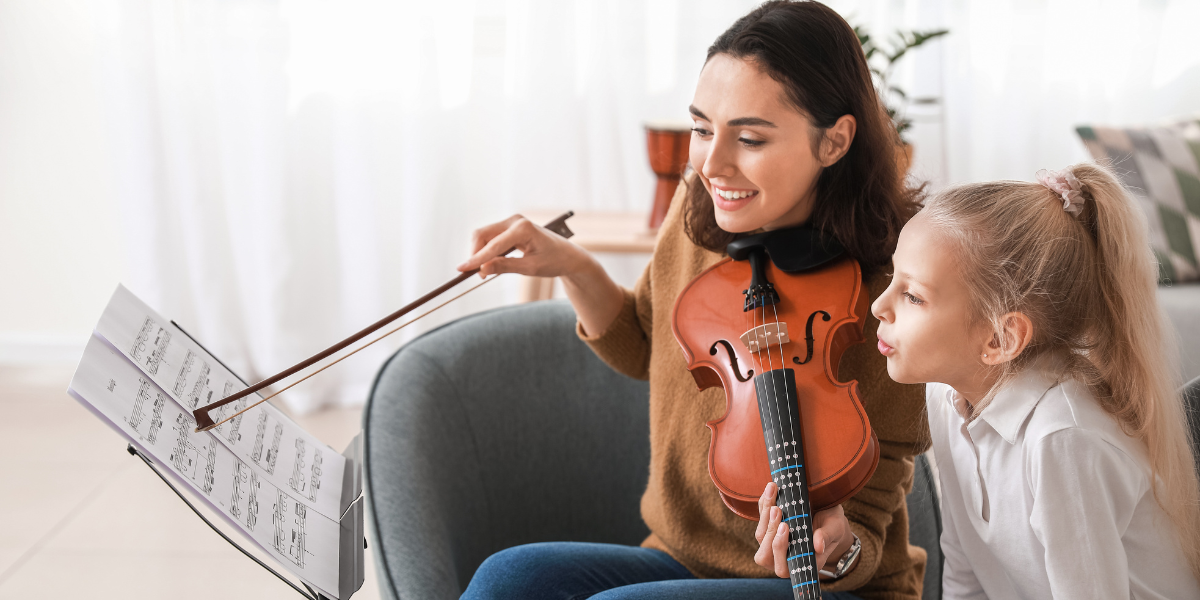How to Choose the Right Teacher for Your Violin Lessons
Learning the violin is an exciting journey, but finding the right teacher can make all the difference. Whether you are a beginner picking up the instrument for the first time or an advanced player looking to refine your skills, a great instructor can guide you towards achieving your musical goals. In this guide, we’ll explore how to choose the right violin teacher and what to look for when considering violin lessons in Toronto.
1. Determine Your Goals
Before starting your search, it’s important to define what you hope to achieve with your violin lessons. Are you aiming to play classical pieces, explore fiddle or bluegrass styles, or simply enjoy playing for fun? Knowing your goals will help you find a teacher whose expertise aligns with your musical ambitions. Some instructors specialize in classical techniques, while others excel in contemporary or folk styles.

2. Research Qualifications and Experience
A qualified teacher should have a strong background in music education, performance, and teaching experience. Look for instructors with formal training, degrees in music, or professional performance experience. Experienced teachers know how to tailor lessons to each student’s level and learning style, ensuring steady progress and a positive learning experience.
3. Teaching Style and Approach
Every violin teacher has a unique teaching style. Some emphasize strict technique and classical fundamentals, while others focus on improvisation and creative expression. Consider which approach resonates with you. Do you prefer structured lessons with clear objectives, or a more flexible, explorative style? Observing a trial lesson or asking for a demonstration can give you a sense of how the teacher interacts with students.
4. Personal Compatibility
The teacher-student relationship is crucial for effective learning. You’ll want a teacher who communicates clearly, is patient, and motivates you to practice consistently. A supportive and encouraging instructor fosters confidence and makes the learning process enjoyable. Remember, a good connection with your teacher can be just as important as their credentials.
5. Class Options and Flexibility
When searching for violin lessons in Toronto, consider the format and flexibility offered by the instructor or music school. Some students prefer in-studio lessons for the immersive experience, while others may choose online lessons for convenience. Additionally, home-based lessons provide a comfortable environment for personalized instruction. Choose a format that suits your schedule and learning preferences.
6. Reviews and Recommendations
Word-of-mouth recommendations and online reviews can offer valuable insights into a teacher’s effectiveness and reliability. Ask friends, family, or fellow musicians for suggestions, and check online platforms for feedback from past and current students. Positive testimonials often reflect a teacher’s ability to connect with students and deliver quality instruction.
7. Trial Lessons
Many music schools and private instructors offer trial lessons, allowing you to experience their teaching style before committing. A trial session helps you evaluate the teacher’s approach, the learning environment, and whether it aligns with your expectations. Elite Music Academy, for instance, provides risk-free trial violin lessons in Toronto, giving new students the chance to meet their teacher and set goals before starting regular lessons.
8. Curriculum and Learning Path
Ask about the curriculum and how lessons are structured. A well-organized program should progressively develop your skills, covering essential techniques, music theory, and repertoire. Instructors should provide regular feedback and guidance, helping you track your improvement over time. Whether your goal is classical performance or contemporary fiddle, a structured learning path ensures consistent growth.
9. Opportunities for Performance
Learning to play the violin is more than practicing exercises; it’s about expressing yourself and sharing your music. Many schools offer performance opportunities, such as recitals, community events, or ensemble participation. Performing in front of an audience helps build confidence, reinforces practice habits, and makes the learning experience more rewarding. When choosing violin lessons in Toronto, consider whether your instructor provides opportunities to showcase your skills.
10. Affordability and Commitment
Finally, consider your budget and how much time you can realistically dedicate to lessons. Violin instruction varies in cost, depending on the teacher’s experience, lesson format, and location. While affordability is important, it’s equally crucial to prioritize quality and compatibility with your learning style. Finding the right balance ensures a sustainable and enjoyable learning experience.
Why Choose Elite Music Academy for Violin Lessons
Elite Music Academy offers unparalleled violin lessons in Toronto, designed to meet the needs of students of all ages and skill levels. Whether you prefer in-studio, online, or in-home lessons, our expert instructors provide personalized guidance to help you reach your musical goals. With a comprehensive curriculum covering classical, contemporary, and fiddle styles, students can develop technique, musicianship, and performance skills.
Our trial lessons allow students to experience the teaching style firsthand, set their objectives, and choose the path that best suits them. Joining Elite Music Academy also offers performance opportunities, connecting you with a community of passionate musicians and enabling you to share your talent on professional stages.
When searching for violin lessons in Toronto, don’t settle for just any teacher. Choose an instructor who understands your goals, matches your learning style, and inspires you to grow. With the right teacher, your violin lessons can be a rewarding journey filled with music, skill, and joy.
Unlock your musical potential today with expert violin lessons at Elite Music Academy. Book your trial and discover the perfect teacher to guide you on your musical journey.


